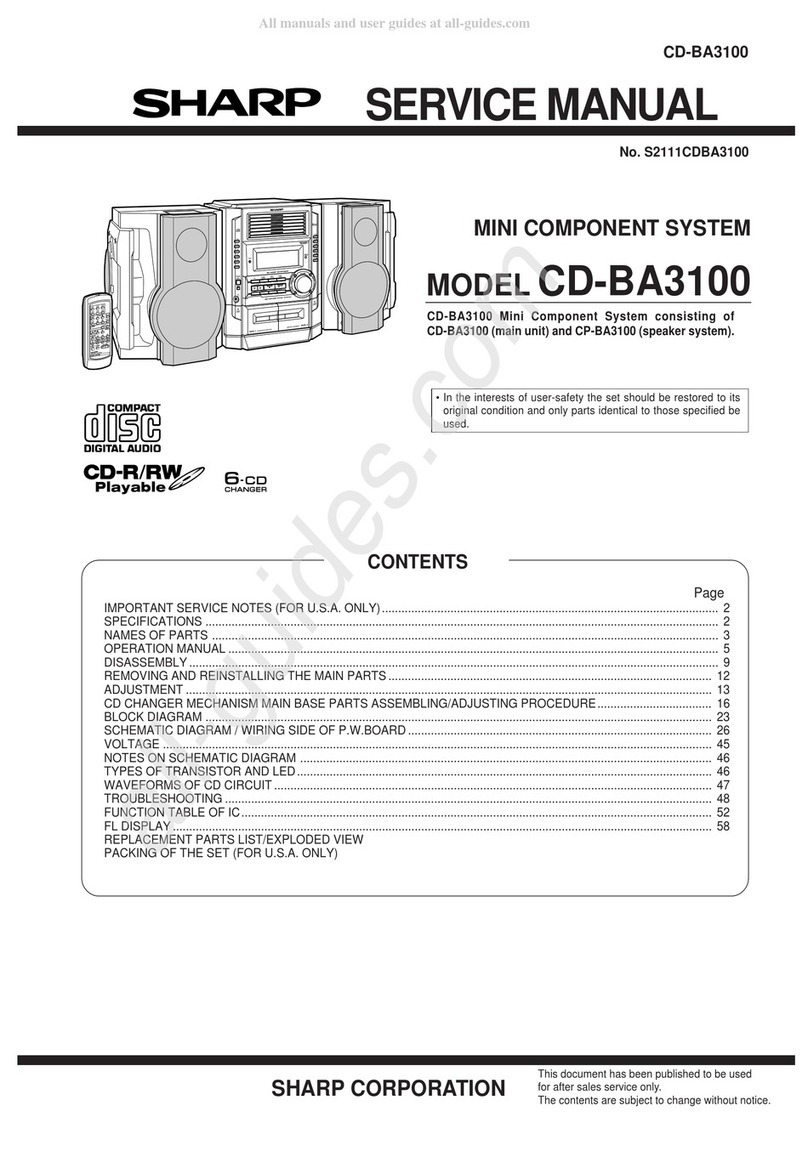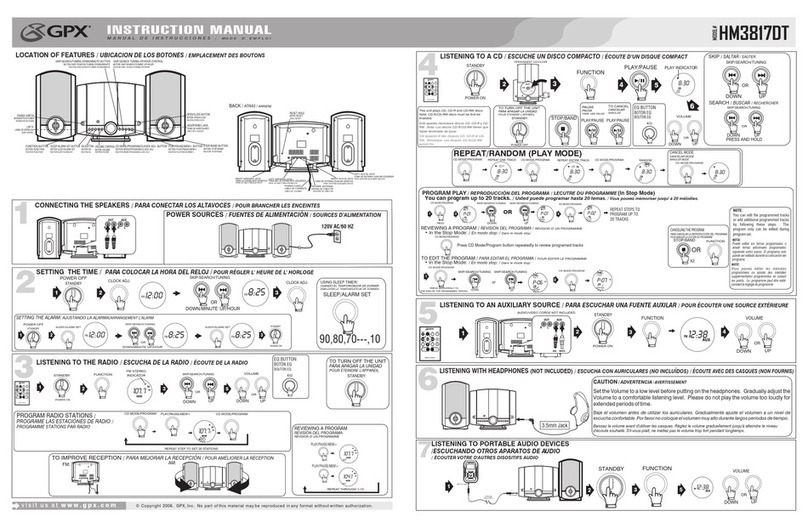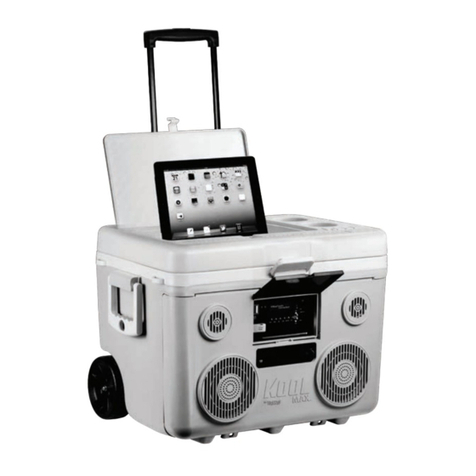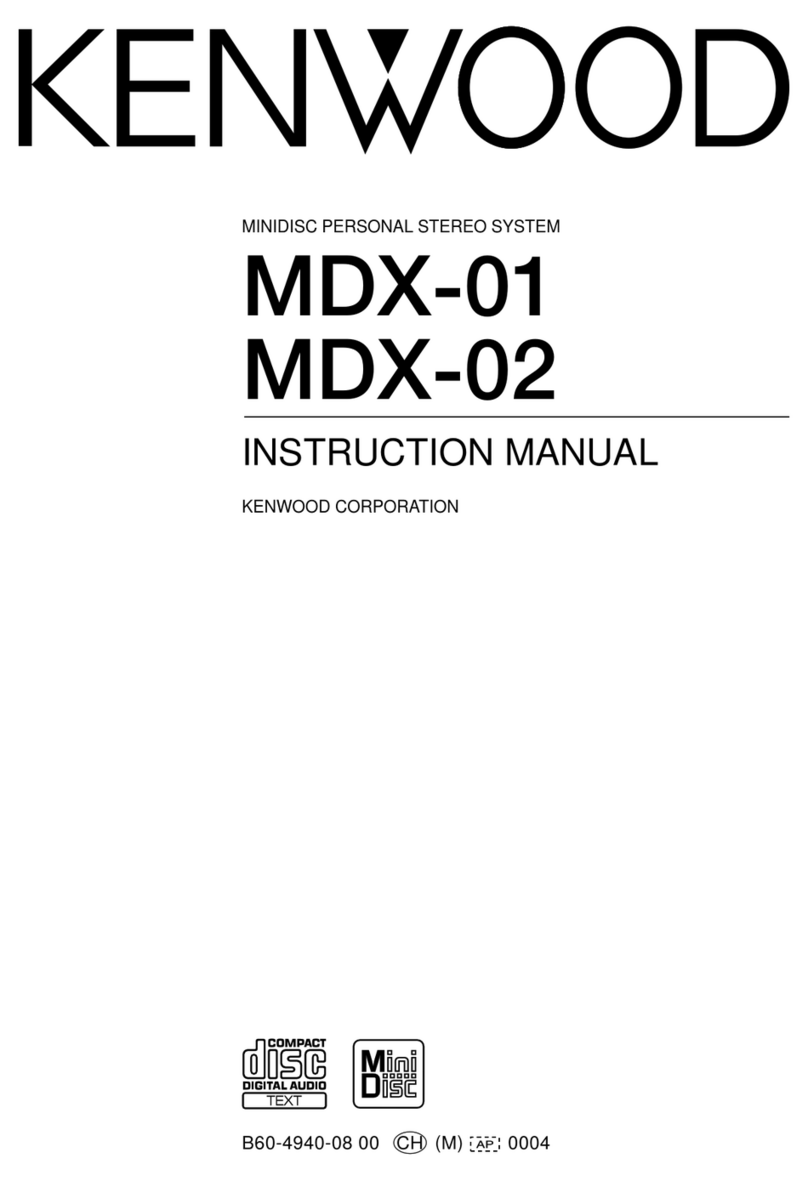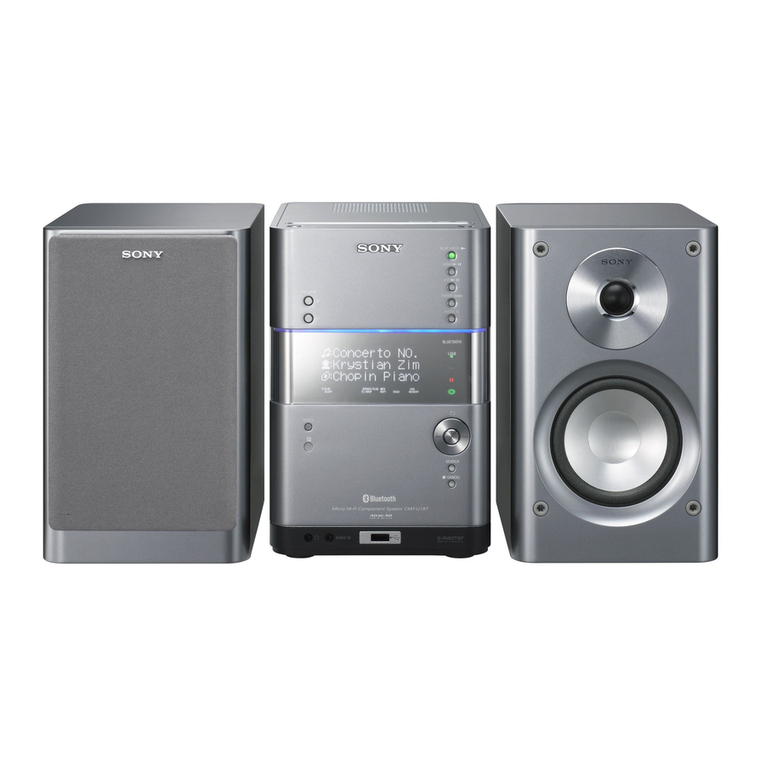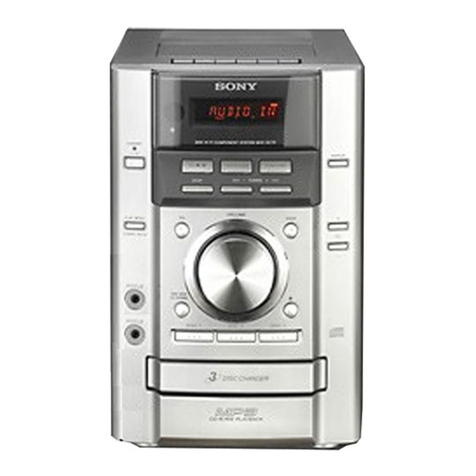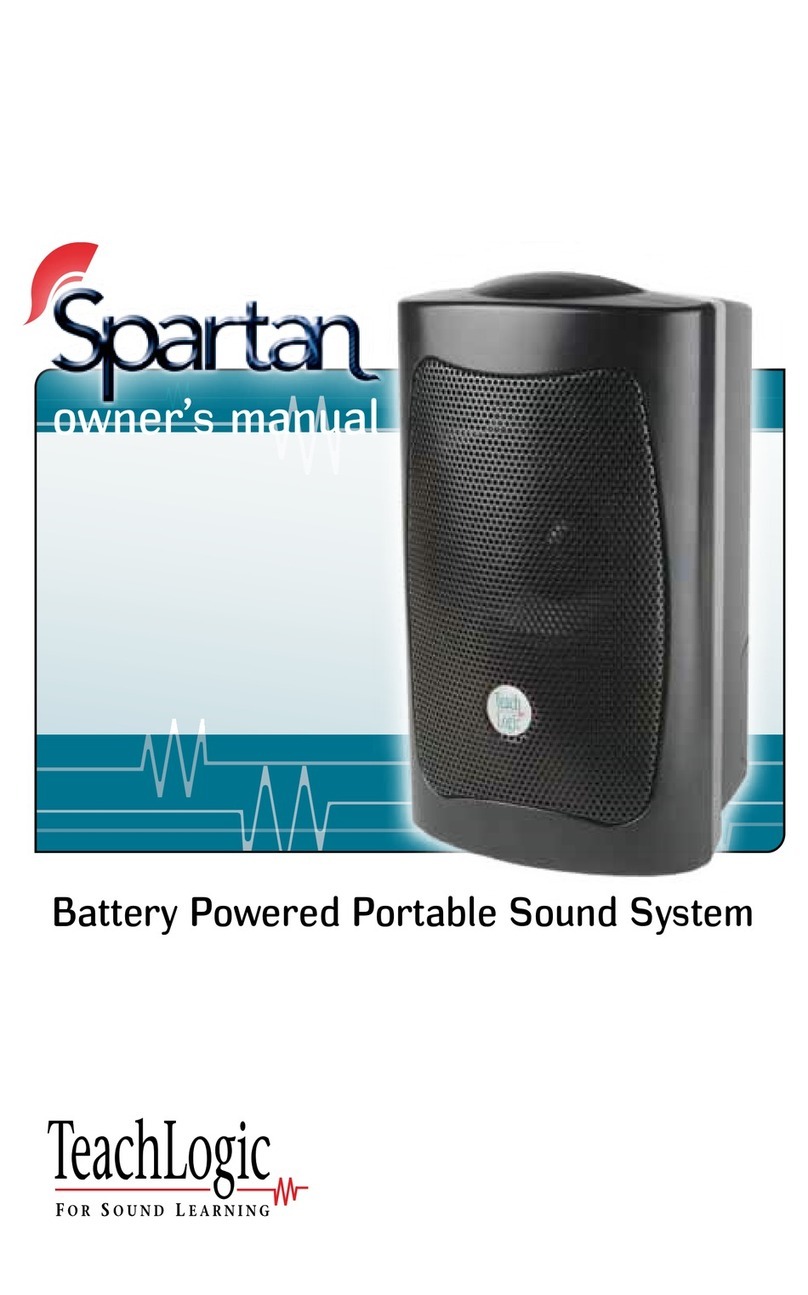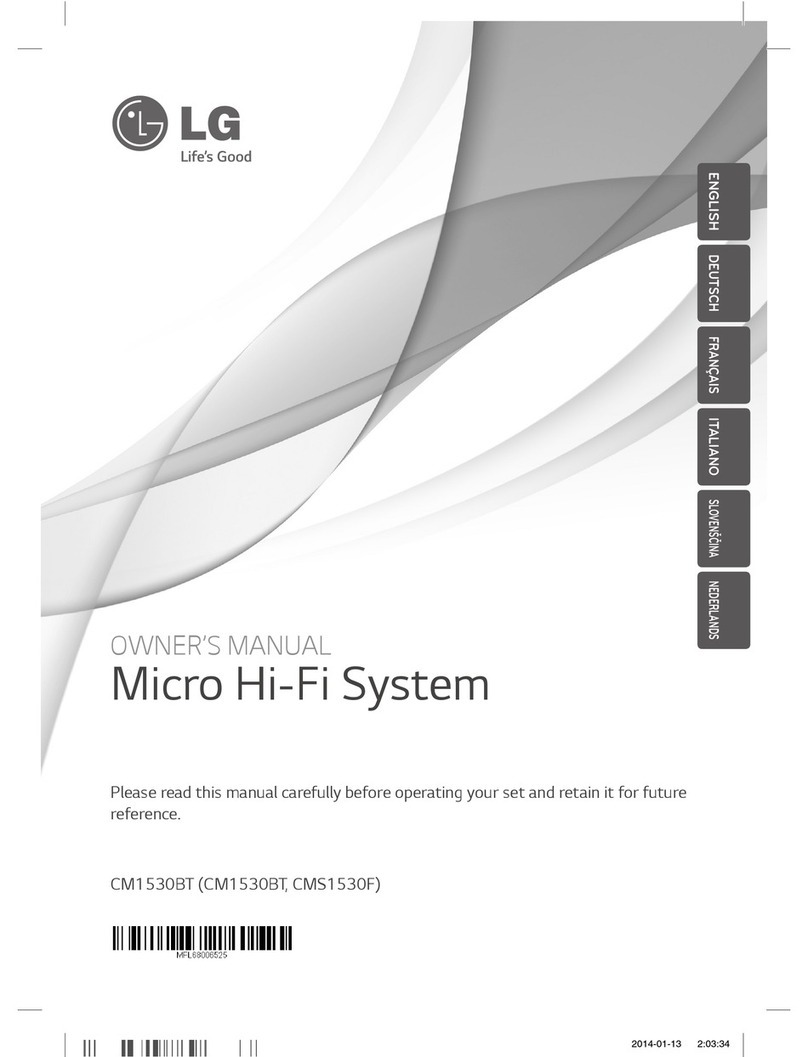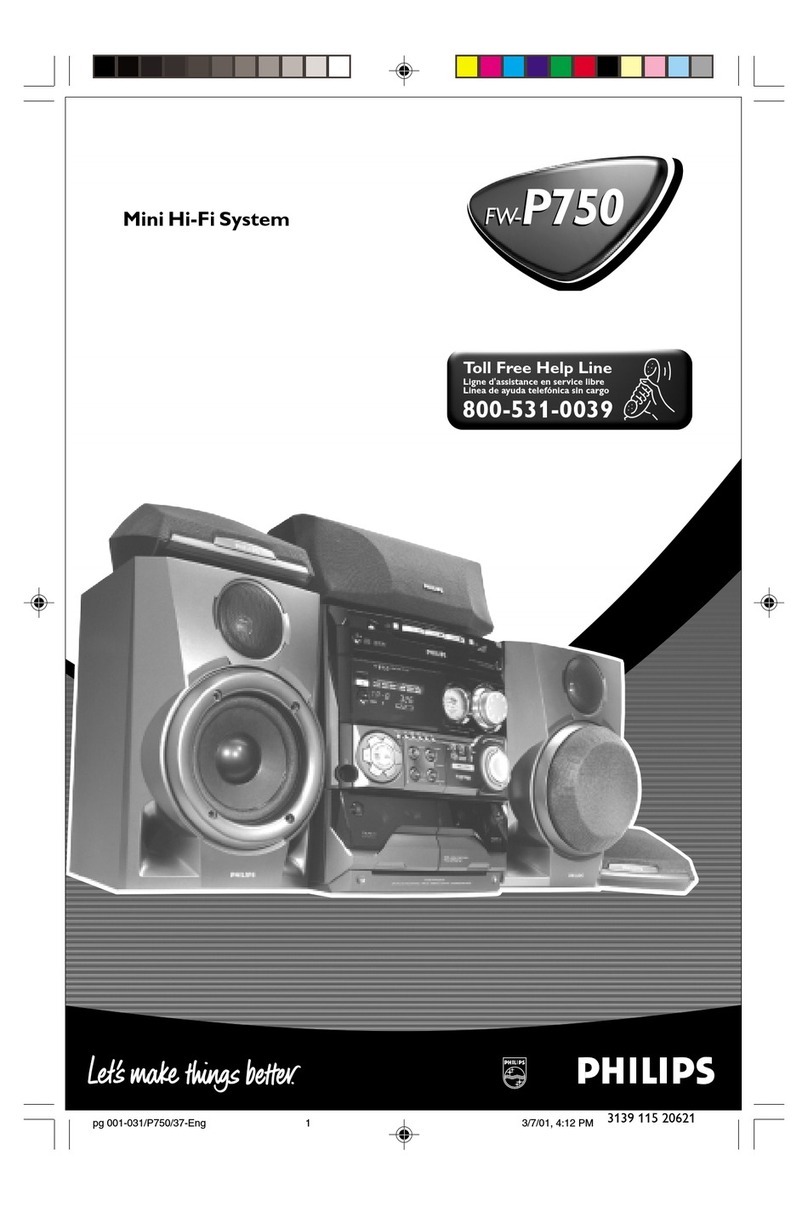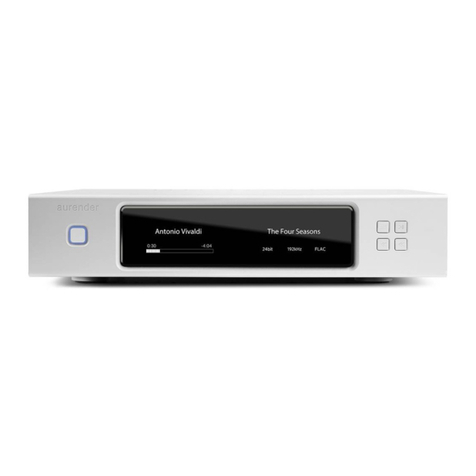Forge Electronics COMBO MK 3 User manual

Engine Sound Simulator COMBO MK 3 Document Version: 1.1 12th Jan 2018
1
Engine Sound Simulator
COMBO MK 3
This engine sound simulator is principally intended for radio controlled model boats but
may also find application in trucks, tanks, cars, rock-crawlers and even aircraft.
SUPPLIER:-

Engine Sound Simulator COMBO MK 3 Document Version: 1.1 12th Jan 2018
2
FEATURES
The Combo MK3 Engine Sound Simulator is packaged in a small footprint, low profile, 3D
printed case which allows all wiring connections and adjustments to be made without the
need to first remove the case.
Functional features of the Combo unit are as follows:-
9 different engine ‘voices’ to choose from –8 ‘petrol’/’diesel’, 1 ‘steam’
automatic start/stop
start-up and run-down sounds (‘petrol’ & ‘diesel’ only)
simple user adjustment of
otickover
otop speed
oidling timeout period
oengine ‘voice’
ocylinder count
oneutral
ospan
‘demo’ mode
bi-colour LED indicates neutral and run conditions
The user interface allows the user to interactively adjust the engine type, its number of
cylinders, its tickover, top speed and idling time-out duration via a simple system
utilising a pushbutton on the unit in conjunction with the transmitter’s throttle joystick.
Users may also set the unit to match both the neutral and span parameters of the
transmitter joystick anywhere within its 1-2mSec range thereby accommodating
forward only systems and pistol type controllers with a 70/30 forward/reverse range.
A further feature is the ‘Demo’ mode which is of use in static displays at exhibitions.
This allows the model’s sound capability to be demonstrated without running the
motor(s) - a neutral (stop) signal is sent to the ESC during this mode.
A red/green bi-colour LED serves to indicate both the neutral and the run conditions,
thus always showing that the unit is powered. In addition, the LED pulses in sympathy
with the engine speed when the latter is running.
OVERVIEW
The sound unit picks up its speed demand from the r/c throttle signal of the model and
produces an engine sound that varies smoothly and proportionally with the throttle setting
demand in both forward and reverse. With the throttle closed, the engine has an idling
time-out period followed by a ‘run-down’ (stopping) sound.

Engine Sound Simulator COMBO MK 3 Document Version: 1.1 12th Jan 2018
3
Opening the throttle again causes the engine to re-start following a short ‘cranking’ sound.
The start-up and run-down sounds are inappropriate for the steam option and are
therefore omitted.
The unit is designed to be used with any digital proportional radio control systems that
utilise the industry standard 1-2mSec servo signal. The unit is easily installed by removing
the Electronic Speed Controller (ESC) lead from your receiver and plugging in the ‘THR’
lead from the sound unit in its place. The ESC lead then plugs into the sound unit’s ‘ESC’
port. The unit's electronics takes its power from the receiver, but the loudspeaker derives
its power from either the model's main propulsion battery or a separate battery pack.
Connections for the speaker power and the loudspeaker itself are made using screw
terminal blocks.
Whilst a synthesized engine sound can never compete with recordings of the real thing,
this unit captures the 'spirit' of the various engine sounds.
SPECIFICATIONS
speed demand
sensing method
receiver throttle channel (unit has pass-through to
ESC)
neutral (idling)
signal condition
can be set anywhere in the entire range 1.0mSec to
2.0mSec
neutral / run
indication
bi-colour LED - red for neutral, otherwise green,
pulses at engine rate if latter is running.
receiver voltage
(which powers the
unit's electronics)
4.8V min to 6V max (this is usually supplied by a
BEC which is often incorporated in the ESC) DO NOT
USE A “6V” LEAD ACID BATTERY –a fresh fully
charged one of these can output as much as 6.6V
speaker impedance
8 ohm minimum (Technobots part no. 2400-015
recommended)
speaker supply
voltage
from zero to 12V (governs the volume of the unit)
engine types
8 'petrol'/'diesel' plus 1 'steam'
number of cylinders
‘petrol’ & ‘diesel’ - 2, 3, 4, 5 or 6
‘steam’ – 1, 2, 3, 4, 5 or 6
engine start / stop
automatic, determined by throttle demand and idling
period
idling period
may be set from 0 to 20 minutes in 5 second
increments
INSTALLATION
The unit may be mounted by the four corner lugs on its case (self-tapping screws supplied)
to a convenient location in the boat or vehicle. The case affords mechanical protection to
the electronic circuitry and renders it “splash resistant” but certainly not “waterproof”, so in
marine installations it should be mounted accordingly.

Engine Sound Simulator COMBO MK 3 Document Version: 1.1 12th Jan 2018
4
Figures 1 and 2 below show the connector designations.
The lead from the receiver’s
throttle channel connects to
the lower 3-pin connector. A
Futaba type white/red/black
lead is shown.
The lead from the ESC is
connected to the upper 3-pin
connector. For clarity a JR
type orange/red/brown lead is
shown.
If this manual is not to hand,
then with the lid removed, by
following the input pins to
their destination on the PCB,
the silk screening on the
latter shows which function is
related to each pin set –
marked ‘THR’ and ‘ESC’
Figure 1 –View of the unit showing signal connections
Wiring to the loudspeaker and the speaker power
supply (BATT –and +) is made into the terminal
block on the circuit board via the slot in the end of
the case. A slot in the lid allows screwdriver access
to the terminal block to tighten the screws.
If this manual is not to hand, then with the lid
removed the silk screening on the PCB indicates
which pair of terminals connects to the battery and
which to the speaker.
Polarity does not matter in the case of the speaker,
but does in the case of the battery. See the photo
opposite showing the correct polarity.
Figure 2 –View of the unit showing access to the terminal blocks
Ideally the unit should be mounted close enough to the ESC for the latter's signal input
lead to reach the ESC port on the unit, but failing that a servo extension lead can be used

Engine Sound Simulator COMBO MK 3 Document Version: 1.1 12th Jan 2018
5
(Technobots part #3601-003). A male/male connector lead (Futaba type - white, red,
black) is supplied to connect the receiver’s throttle channel to the sound unit’s THR port.
Both these leads are inserted through a slot in the side of the case onto the three pin
headers on the circuit board Be sure to mate the connectors correctly, guided by the table
in the wiring diagram (Fig 4) below which shows equivalence of the JR, Futaba and Hitec
industry standard colour schemes.
You must connect up the unit in this manner rather than using a ‘Y’ lead from the receiver
to the sound unit and ESC, as the unit outputs a neutral (stop) signal to the ESC whilst the
various set-up routines are being executed and also during the ‘Demo’ mode. For this
reason the throttle and ESC ports are NOT interchangeable.
WIRING
The wiring diagram (figure 3 below) illustrates the typical interconnection of the major
components of a basic RC model, prior to installing the sound unit. The main battery
usually ranges between 6 to 12V and in the example shown the Electronic Speed
Controller (ESC) has a built-in Battery Eliminator Circuit (BEC) which drops the receiver
and servo voltage down to 5V. In the event that the ESC does not have an integral BEC
then sometimes a separate receiver battery pack is used and is plugged into either a spare
channel, or a dedicated battery slot on the receiver. Receiver battery packs are typically 4
AA cells, either 1.2V NiMh rechargeables or 1.5V primary cells.
Figure 3 –Typical wiring of an R/C model
As will be seen from figure 4 below, the sound unit is simply interposed between the
receiver and the ESC, and takes its speaker power from the main battery.

Engine Sound Simulator COMBO MK 3 Document Version: 1.1 12th Jan 2018
6
Figure 4 –Wiring up the sound unit (case removed for clarity)
Note the colours and orientation of the cables connecting receiver and ESC to the sound
unit. JR types shown –but see wiring equivalence table in figure 4 above.
The battery supply to the sound unit and the speaker currents are very modest and thin
multi-strand flexible cable of 1amp rating (or higher) can be used (7/0.2mm Equipment
Wire)
SPEAKER POWER SUPPLY
As the installation diagram shows this is usually taken from the main propulsion battery of
the model. Correct polarity MUST be observed. Connection of these leads alone will NOT
power the unit, and equally without these leads being connected there will be no sound
output from the unit.
As the speaker signal is digital in nature, for simplicity, cost and efficiency the speaker is
switched directly to its battery supply. This results in the output volume not being
adjustable. But to a very large degree the quality and volume of sound produced will
depend on the speaker itself and the way it is mounted in the model. If for example using a
6V propulsion battery the resultant sound is too quiet, or if on 12V it is too loud then an

Engine Sound Simulator COMBO MK 3 Document Version: 1.1 12th Jan 2018
7
auxiliary battery or batteries of higher or lower overall voltage may be used to achieve the
volume level required (12V maximum limit applies). A pack of AA cells is quite adequate
for this purpose, with the benefit that the number of cells may be easily adjusted.
MOUNTING OF THE LOUDSPEAKER
Inevitably the size and construction of the model may preclude the recommended speaker
being used and if in addition its installation is less than ideal, then both the volume and the
quality of the sound will be compromised. If in any doubt as to the unit's capabilities, try
connecting it to a music-centre loudspeaker and hear the result. Your model sounding
anything less rewarding than this represents the magnitude of your personal battle to defy
the laws of acoustics!
Speakers are ideally mounted on a baffle –this is usually a piece of wood whose width is
about twice the diameter of the cone with a hole in it about the size of the cone
(determined by the speaker mounting arrangement). The purpose of the baffle is to
prevent the anti-phase sound waves from the rear of the cone 'leaking' round to cancel out
the in-phase sound waves from the front. Hi-fi speaker cabinets are generally sealed to
achieve this. The hull of a boat makes an excellent substitute if the speaker can be
mounted beneath the cabin using the entire deck as a baffle and the sound can escape
through open portholes, windows, doors or ventilation grilles in the superstructure.
If you can't achieve that sort of set-up you can try the recommended Technobots 10W
speaker facing upwards with a 50mm long, thick cardboard tube whose 75mm internal
diameter is a snug fit over the inboard rigid rim surround of the speaker. The wall thickness
of the tube is about 4/5mm - being the inner former of a roll of heavy duty 50mm black pvc
tape like you find in pound shops. That is stage one and modifies the sound interestingly -
then try the palm of your hand over the end of the tube –and if you like the result then use
some of the black tape to seal it! Other users report good results from this sort of set-up
with various lengths of sealed stout tube with a short stub opening at the tube top of
maybe 10 to 20mm dia and about 20mm long.
If you make the sound sealing box too small the speaker will struggle to compress the air
in it (the cone displacement will make a large percentage volumetric change) and the
volume and sound quality will suffer.
The steam unit is the least demanding with respect to both the speaker and its mounting
considerations.
UNIT FAMILIARISATION
It is assumed that the unit has been correctly connected up following the installation
procedure above and the model is restrained on a stand to allow the propeller(s), wheels
or tracks to run free. First set the throttle joystick to neutral and then switch on the
transmitter. Now power the model and the red LED on the unit should be showing a ‘solid’
red, signifying the engine is stopped and the throttle channel is in the 'neutral' condition.

Engine Sound Simulator COMBO MK 3 Document Version: 1.1 12th Jan 2018
8
Advance the throttle and the speaker should issue a short cranking sound (steam
excepted) and the 'engine' should start and smoothly run up to full speed as the throttle is
opened fully, the LED now flickering green in sympathy with the engine rate. With the
joystick returned to the central position the engine should return to idling speed and the
LED should revert to flickering red. After a user defined period of idling in neutral the
engine will run down to a stop and the LED will then show a ‘solid’ red. (manufacturer’s
default idling period set to 20 secs)
The LED indication for neutral (and the corresponding tickover speed) may not line up with
the existing ‘neutral’ of the system and it may be necessary to adjust the neutral of the unit
to match that of the ESC to ensure the unit is idling whilst the model’s motor is stationary.
This may be achieved by a single brief press of the unit’s push button.
PARAMETER SETTING
This is achieved by means of the unit’s pushbutton in conjunction with the transmitter
(throttle) joystick. If the unit is correctly installed in accordance with the instructions, the
ESC will NOT respond to the throttle movements during parameter setting, so an
unrestrained model will be quite safe.
NOTE: If the span of the joystick has not been set (see item 8 below) then it may not be
possible to access the full range of adjustment of some of the parameters.
There are eight distinct set-up modes that may be
randomly accessed by giving up to eight short presses
of the pushbutton. After a short pause, to confirm that
no further presses have been made the appropriate
mode will be asserted. Each button press is
accompanied by a short ‘beep’ and a green flash from
the LED. Set-up mode may be entered at any time.
1. Neutral
2. Tickover
3. Top Speed
4. Cylinder Count
5. Engine ‘Voice’
6. Idling Time-Out
7. ‘Demo’ Mode
8. Neutral & Span
Return the joystick to the neutral position to exit the set-up mode –this is indicated by
the speaker issuing a brief ‘trill’ and the LED asserting a solid red (or green if demo
mode activated)
(1) NEUTRAL –regardless of its previous state, the engine stops and the current joystick
position is assigned as neutral. Set-up mode is then exited automatically. This function is
intended to correct minor drift of system settings only –for the unit’s first use with a
transmitter the procedure in item (8) should be followed which also sets the span of the
joystick.
(2) TICKOVER –regardless of its previous state, the engine begins to run at tickover
speed and this may now be adjusted by use of the throttle channel joystick. When the

Engine Sound Simulator COMBO MK 3 Document Version: 1.1 12th Jan 2018
9
desired speed has been set, press the button to save the tickover value into memory. The
engine sound ceases. Return the joystick to the neutral position to exit set-up mode.
(3) TOP SPEED –regardless of its previous state, the engine begins to run at top speed
and this may now be adjusted by use of the throttle channel joystick. When the desired
speed has been set, press the button to save the top speed value into memory. The
engine sound ceases. Return the joystick to the neutral position to exit set-up mode.
(4) CYLINDER COUNT - regardless of its previous state, the engine begins to run at a
medium speed and the number of cylinders may now be adjusted by use of the throttle
channel joystick. Assuming the joystick is initially at ‘neutral’ then a brief push in the
forward direction will increase the cylinder count by one. Return to neutral and push
forward again to further increase the cylinder count. Trying to increase beyond the
maximum count of six causes a short ‘beep’ to be issued and the count rolls round to the
minimum cylinder count value. Similarly, brief pushes to the reverse direction decrease the
cylinder count. When the desired cylinder count has been set, press the button to save the
cylinder count value into memory. The engine sound ceases. Return the joystick to the
neutral position to exit set-up mode. After setting the cylinder count, the tickover and top
speed settings may benefit from re-adjustment to suit the changed character of the engine.
If the user has a forward only set-up, then the joystick cannot be pressed in the reverse
direction to reduce the cylinder count so a reduction can only be achieved by forward
presses to roll over the maximum value and then advancing from the minimum value so
reached.
(5) ENGINE ‘VOICE’ - regardless of its previous state, the engine begins to run at a
medium speed and the ‘voice’ or sound character of the engine may now be adjusted by
use of the throttle channel joystick in the same manner as employed for cylinder count
adjustment in (4) above. When the desired ‘voice’ has been set, press the button to save
the ‘voice’ value into memory. The engine sound ceases. Return the joystick to the neutral
position to exit set-up mode. After setting the engine ‘voice’, the cylinder count, tickover
and top speed settings may benefit from re-adjustment to suit the changed character of the
engine. If the user has a forward only set-up, then the joystick cannot be pressed in the
reverse direction to step backwards through the voices so this can only be achieved by
forward presses to roll over the final voice and then advancing from the first voice so
reached.
(6) IDLING TIME-OUT - regardless of its previous state, the engine stops and the LED is
on for one second. Following this the LED gives a brief flash at one second intervals,
accompanied by a ‘tick’ sound, where each ‘tick’/flash represents 5 seconds of timeout
duration. Press the button at the desired duration to save the timeout value into memory.
Pressing the button during the initial one second that the LED is on sets the timeout value
to zero –this is principally intended for use with the steam sound so the engine stops
immediately the throttle is closed but it may be set for all engine types –equally, users

Engine Sound Simulator COMBO MK 3 Document Version: 1.1 12th Jan 2018
10
may choose to allow the steam engine to idle at closed throttle. Return the joystick to the
neutral position to exit set-up mode.
(7) DEMO MODE –regardless of its previous state, the engine stops and the unit now
outputs a neutral (stop) signal to the ESC. Return the joystick to the neutral position to exit
set-up mode. The throttle may now be adjusted to demonstrate the model’s sound
capability without driving its motor(s), which is useful for static display in shows and
exhibitions. To signify operation in this mode the normal running red/green LED indications
are reversed. Demo Mode is operative until it is cancelled either by entering it again which
turns it off (ie it exhibits a toggle function) or by cycling the power to the unit. This is the
only parameter adjustment that is NOT stored in memory because if the reversed
red/green LED indication is not visible the user may have forgotten that the last time the
unit was used it was in demo mode and may be wondering why the model’s motor(s) will
not run!
(8) NEUTRAL & SPAN - regardless of its previous state, the engine stops and the current
joystick position is assigned as neutral. This is indicated by a ‘tick’ from the speaker and
the LED asserting solid red for a second or so. When the LED begins to rapidly flash
red/green advance the joystick to its full extent in the forwards direction and when this is
reached and the LED is now showing green, press the button to set the span. Button
presses are ignored during the rapid red/green flicker –the user must exceed 50% of the
theoretically available span (whereupon the LED shows solid green) before a button press
will be accepted. Return the joystick to the neutral position to exit set-up. Repeating this
procedure is only really necessary when a different transmitter is to be used with the
model or a gross neutral adjustment has been made.
If the sound unit is not matched to the span of the transmitter’s throttle joystick, then the
full speed sound may occur prior to full movement of the throttle or, more likely, full speed
sound will not be reached at full throttle.
NO SIGNAL CONDITION
If the unit is powered but no throttle signal can be detected then the LED will alternately
flash red and green at about one second intervals. After each ten flash cycles, the speaker
will issue a brief ‘tick’ sound to warn of this condition in case the LED is not visible.
Table of contents
Popular Stereo System manuals by other brands
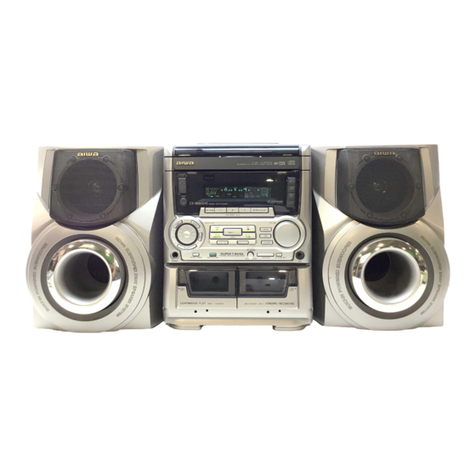
Aiwa
Aiwa CX NMA545 operating instructions
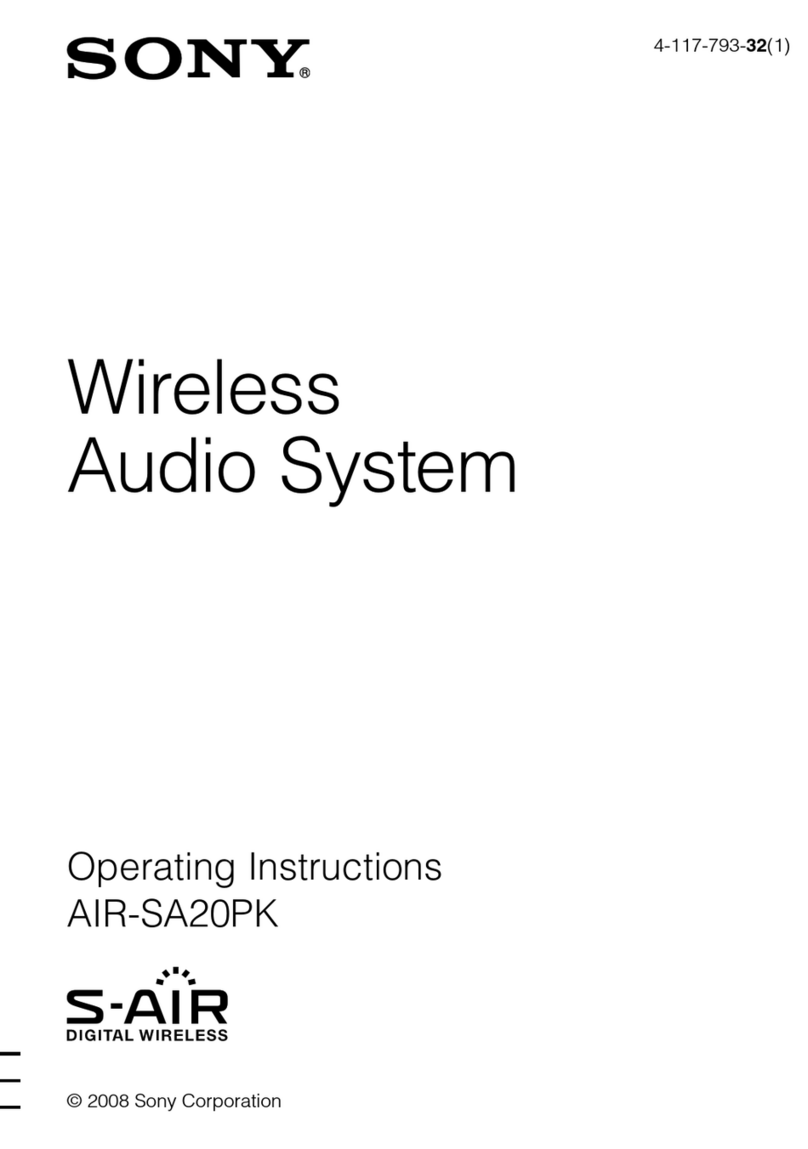
Sony
Sony AIR-SA20PK (AIRSA15R) operating instructions

Grundig
Grundig RR 3200 CD Service manual
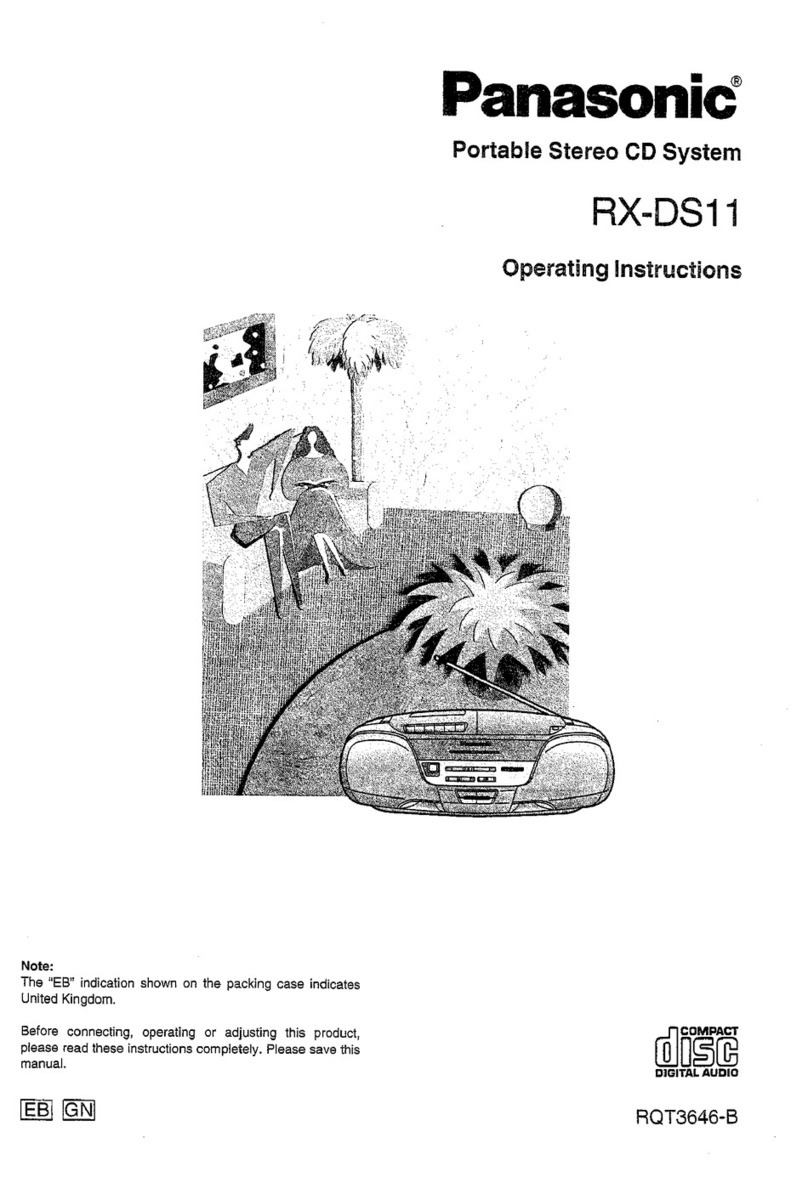
Panasonic
Panasonic RXDS11 - RADIO CASSETTE W/CD operating instructions
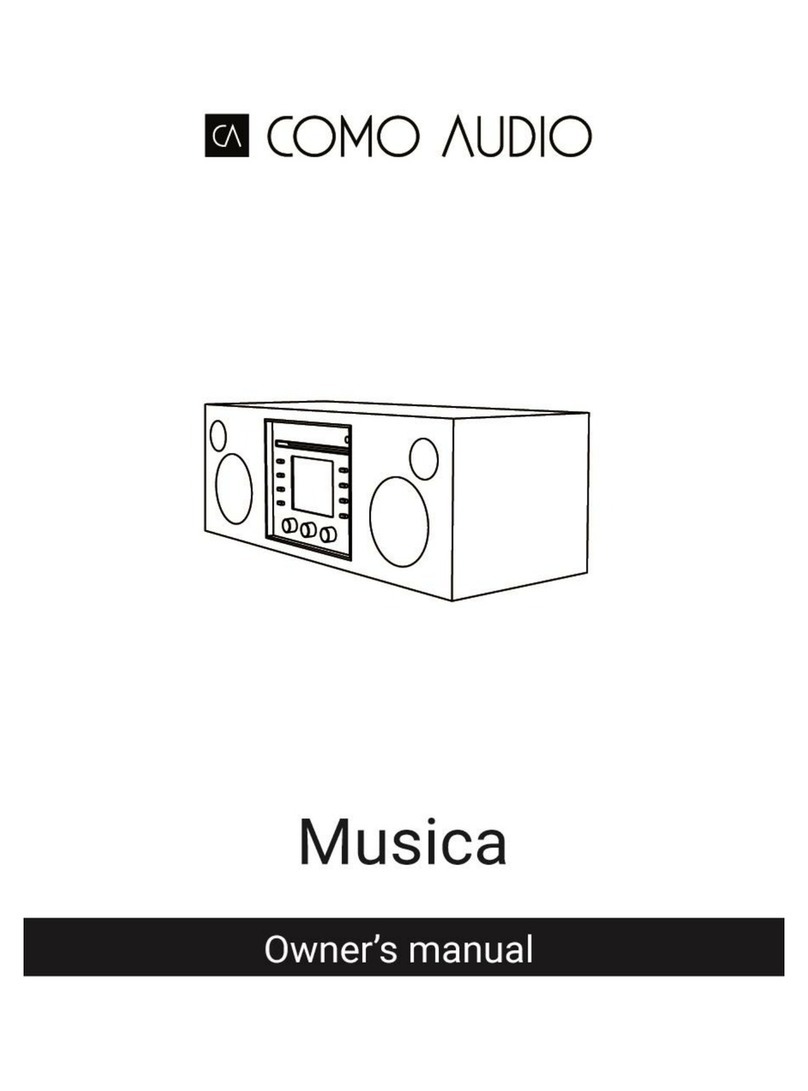
COMO AUDIO
COMO AUDIO Musica owner's manual
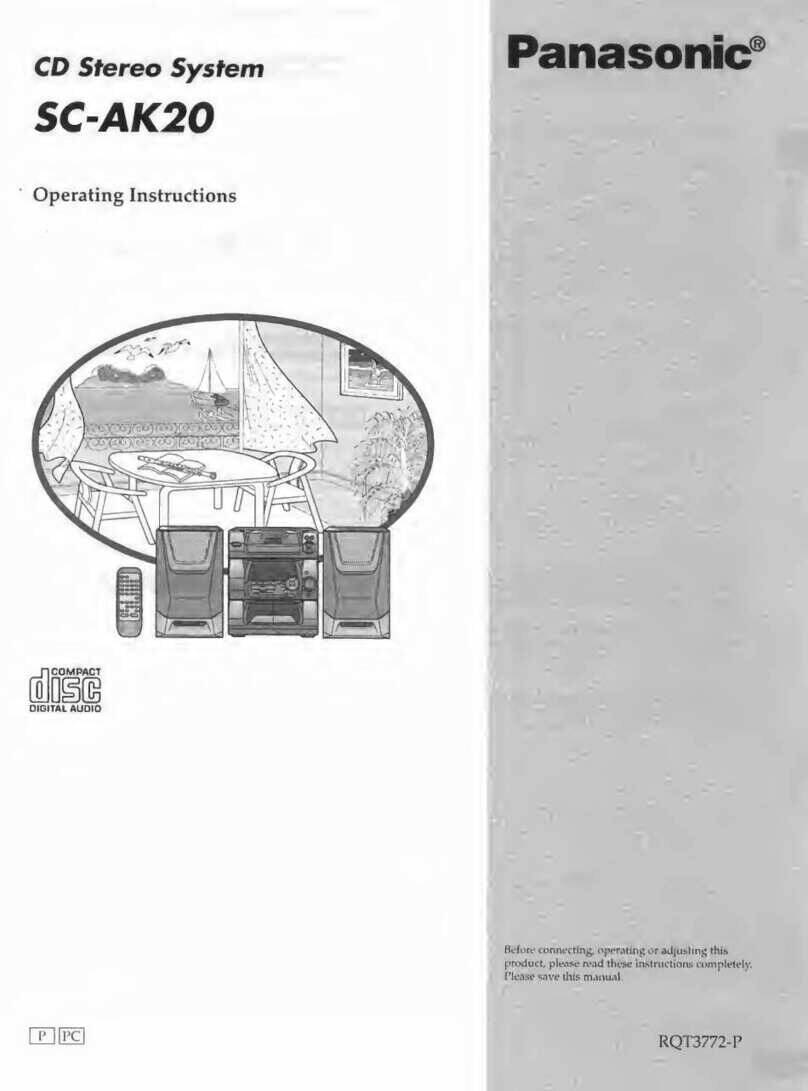
Panasonic
Panasonic SCAK20 - MINI HES W/CD-P operating instructions
